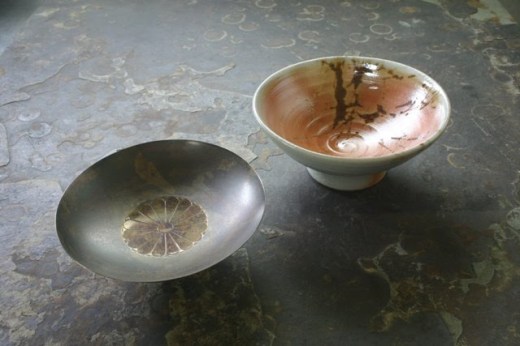
The sakazuki is a ritual that forms a bond of loyalty between yakuza brothers. Source: anime.stackexchange.com
Yakuza syndicates, similar to the Italian mafia, consider themselves families. They take in miscreants off the street of Japan and elders act as surrogate parents, teaching them the ways of the yakuza. In fact, the yakuza formalize this entire process by way of the sakazuki.
Historically, the sakazuki was used to formalize promises or deals. For example, the sakazuki is performed three times at Shinto wedding ceremonies, fortifying the bond between a husband and wife.[i] To the eyes of a commoner, the sakazuki would look like an extremely formal and outdated process. However, the sakazuki is extremely important and specific to the yakuza in many ways, since it literally symbolizes the forming of a family.
Among different yakuza families, there are different forms of sakazuki. Specifically, between bakuto (gambling) and tekiya (racketeering) families, each sakazuki ceremony is known by a different name. That being said, many of the ceremonies are accomplish similar goals. The four most important sakazuki are the atomesouzoku, oyakosakazuki, kyoudaisakazuki, and nakanaorisakazuki. Respectively, these are the succession, parent-child, brother-brother, and reconciliation sakazukis.[ii]
The ceremony itself is extremely formal. Once the day of the ceremony is selected, an altar is constructed in a room that has been ritually purified. Three scrolls are placed on the altar to represent three deities. If the ceremony is performed by a bakuto family, the deities are: Hachiman, the god of war; Amaterasu-ookami, the sun goddess and ancestor of all Japanese emperors; Kasuga-daimyoujin, the deity of Kasuga temple. If performed by a tekiya family, the scrolls represent: Kinjou-tenno, the current emperor; Amaterasu-ookami; Sheng Gong koutei, the guardian deity of tekiya and a legendary emperor of ancient China.[iii] 12 candles are lit on the altar, representing both congratulations and the 12 zodiac signs. Various offerings are also placed on the altar, consisting of: 1 Japanese sake bottle; 1 sake cup; 3 mounds of salt, symbolizing good luck; 2 raw tai (sea breams), one larger than the other, to symbolize the parent-child relationship.[iv]
The ceremony begins with an announcement from the moderator, who proceeds to pour a cup of sake for the oyabun (boss). The oyabun drinks from the cup, and then offers the cup to the new kobun (underling), who finishes the cup and proceeds to wrap it in ceremonial paper, placing the package in his pocket. This symbolizes the undying loyalty the kobun will have towards his oyabun. The ceremony then proceeds to the altar, where sake is offered to the gods using the gifts on the altar.[v] Even if the ceremony is conducted between kyoudai (brothers), there is still a rigid hierarchy, where the higher kyoudai assumes the position of the oyabun, and the lower kyoudai the kobun.[vi]
Following the ceremony, the attendees proceed to a local bathhouse, where the yakuza can show off their full-body irezumi. The night ends with a large and boisterous party.[vii]
[i] “暴力団ミニ講座その7.” 暴力団ミニ講座. 松江地区建設業暴力追放対策協議会, n.d. Web. 14 Dec. 2015.
[ii] “Yakuza Terminology : Japan Subculture Research Center.” Japan Subculture. Japan Subculture Research Center, n.d. Web. 14 Dec. 2015.
[iii] Raz, Jacob. “The Way of the Yakuza.” Kyoto Journal. Kyoto Journal, 2015. Web. 14 Dec. 2015.
[iv] “暴力団ミニ講座その7.” 暴力団ミニ講座. 松江地区建設業暴力追放対策協議会, n.d. Web. 14 Dec. 2015.
[v] Ibid.
[vi] “暴力団ミニ講座その8” 暴力団ミニ講座. 松江地区建設業暴力追放対策協議会, n.d. Web. 14 Dec. 2015.
[vii] Raz, Jacob. “The Way of the Yakuza.” Kyoto Journal. Kyoto Journal, 2015. Web. 14 Dec. 2015.